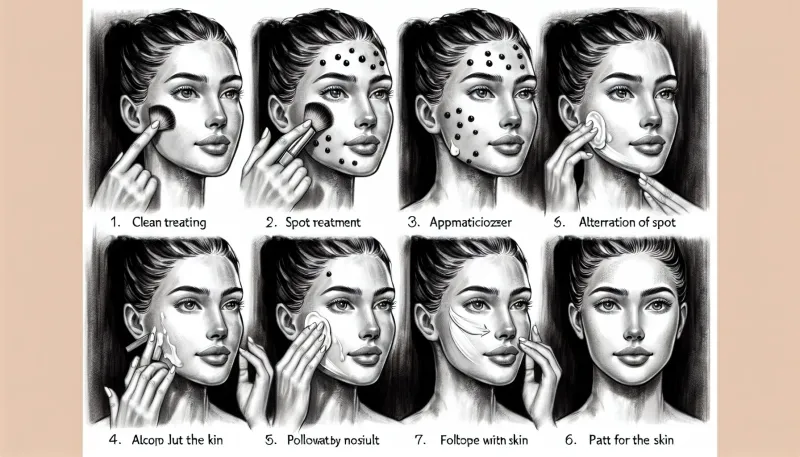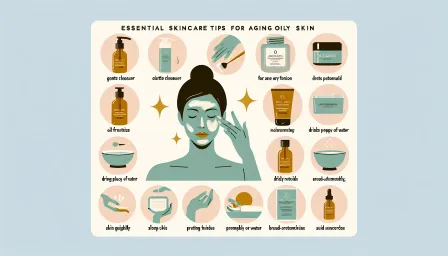Spot Treatment Before or After Moisturizer: The Ultimate Guide

Discover the ultimate guide on whether to apply spot treatment before or after moisturizer. Get expert advice and clear your skin effectively.
Introduction
Navigating the world of skincare can be overwhelming, especially when faced with the challenge of tackling stubborn spots and blemishes. One of the key questions many skincare enthusiasts and novices alike ponder is: should spot treatment be applied before or after moisturizer? This question is crucial as the effectiveness of your skincare routine can hinge on the proper sequence of product application. In this comprehensive guide, we’ll delve into the science behind skincare layering, address frequent concerns, and provide expert recommendations to help you achieve clearer skin.
Understanding Spot Treatments
What Are Spot Treatments?
Spot treatments are targeted skincare products designed specifically to address individual blemishes, acne, or hyperpigmentation. Unlike all-over treatments, spot treatments are concentrated and meant to be applied directly to the affected areas. Common active ingredients in spot treatments include salicylic acid, benzoyl peroxide, sulfur, and tea tree oil.
How Do They Work?
Spot treatments work by delivering potent ingredients to the problem area to reduce inflammation, kill bacteria, and promote healing. For example, salicylic acid is a beta-hydroxy acid (BHA) that penetrates the pores to exfoliate dead skin cells and reduce oil, whereas benzoyl peroxide works by killing acne-causing bacteria.
The Importance of Proper Skincare Layering
Effective skincare relies not only on the ingredients in the products you use but also on the order in which they’re applied. This concept, known as "skincare layering," is crucial for maximizing product efficacy and achieving desired results. Let’s break down the fundamental steps of a typical skincare routine.
Basic Skincare Routine Steps
- Cleansing: Removes dirt, oil, and impurities from the skin’s surface.
- Toning: Balances the skin’s pH and primes it for subsequent products.
- Targeted Treatments: Includes serums, ampoules, and spot treatments.
- Moisturizing: Hydrates and seals in active ingredients.
- Sun Protection: Applies sunscreen during the day to protect against UV damage.
Spot Treatment Before or After Moisturizer: Expert Opinions
The main debate centers on whether spot treatment should be applied before or after moisturizer. The answer largely depends on the formulation of your spot treatment and your skin type.
Applying Spot Treatment Before Moisturizer
Many dermatologists recommend applying spot treatment before moisturizer. The rationale behind this sequence is that spot treatments contain active ingredients that need to penetrate the skin deeply to be effective. Applying a moisturizer first can create a barrier that might inhibit the absorption of these active ingredients.
“To achieve the best results from your spot treatment, apply it directly to clean skin after toning but before moisturizing,” advises Dr. Jane Smith, a board-certified dermatologist.
Applying Spot Treatment After Moisturizer
On the other hand, some skincare experts argue that applying spot treatment after moisturizer can be beneficial, especially for those with sensitive or dry skin. Moisturizers can buffer the potential irritation caused by potent spot treatments and ensure that the skin remains hydrated.
“If you experience dryness or sensitivity, it’s okay to apply your spot treatment after moisturizing to reduce the risk of irritation,” suggests Dr. John Doe, a skincare specialist.
Finding the Right Balance
Determining the best approach for your spot treatment and moisturizer application may require some experimentation. Here are some tips to help you find the right balance:
- Start with clean, toned skin for optimal absorption of active ingredients.
- Prioritize the consistency of your products – lighter, water-based treatments should be applied before thicker, cream-based products.
- Pay attention to your skin’s response. If you experience irritation, consider modifying the application sequence.
- Consult with a dermatologist to tailor your skincare routine to your specific needs.
Common Mistakes to Avoid
To maximize the effectiveness of your spot treatment and overall skincare regimen, be mindful of these common mistakes:
Using Too Much Product
A little goes a long way with spot treatments. Over-application can lead to excessive dryness and irritation. Use a pinpoint amount directly on the blemish.
Inconsistent Application
Consistency is key. Apply your spot treatment regularly as directed to see results. Skipping applications can delay progress.
Neglecting Sun Protection
Some spot treatments can make your skin more sensitive to sunlight. Always apply sunscreen during the day to protect your skin and prevent further damage.
Customized Skincare Based on Skin Type
Your skin type plays a significant role in determining the best approach for applying spot treatment and moisturizer. Let’s look at specific recommendations for different skin types:
Oily/Acne-Prone Skin
For those with oily or acne-prone skin, applying spot treatment before moisturizer is generally advisable. This ensures that effective ingredients, such as salicylic acid or benzoyl peroxide, can target the pores without being obstructed by a layer of moisturizer.
Dry/Sensitive Skin
If you have dry or sensitive skin, consider applying a gentle moisturizer before your spot treatment. This can buffer the skin against potential irritation from the active ingredients in the spot treatment.
Combination Skin
For combination skin, you may need to adapt your approach. Apply spot treatment before moisturizer on oilier areas and after moisturizer on drier patches.
Conclusion
Deciding whether to apply spot treatment before or after moisturizer ultimately depends on your skin type, the formulation of your skincare products, and your individual response to these treatments. By understanding the principles of skincare layering and paying attention to how your skin reacts, you can optimize your routine for clearer, healthier skin. As always, consult a dermatologist with any concerns or persistent skin issues to receive personalized advice and treatment options.
Armed with this comprehensive guide, you are better equipped to make informed decisions about your skincare routine, ensuring that each product you use is as effective as possible in helping you achieve your best skin yet.



























